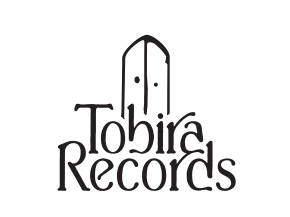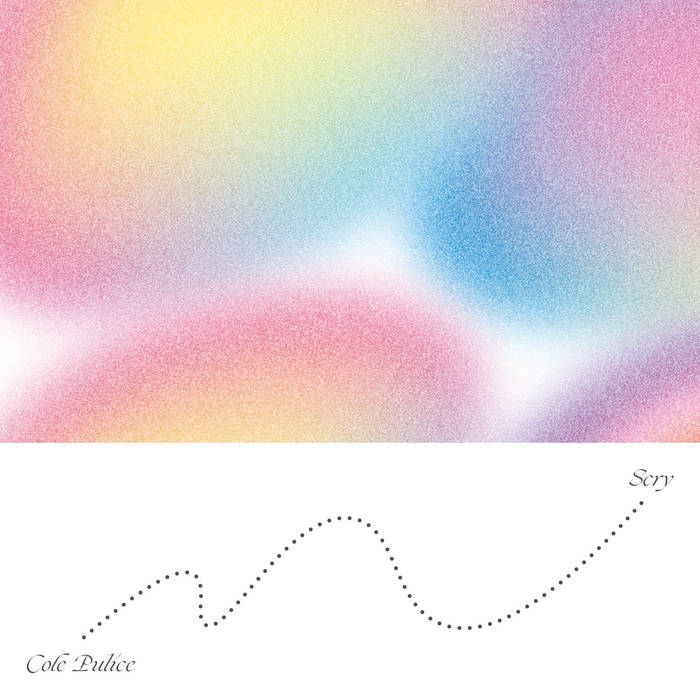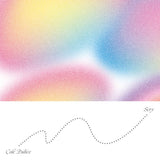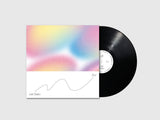クイックビュー
{"id":9009695031546,"title":"Dia Archa \/\/ Selected Ambient 1988—1989 TAPE","handle":"dia-archa-selected-ambient-1988-1989","description":"\u003cp\u003e1980年代末から1990年代初頭に活動していたチェコのアンビエントデュオDia Archaが、2025年11月にイギリスの発掘専門レーベルInfinite Expanseからリリースしたカセットです。\u003c\/p\u003e\n\u003cp\u003e1988-1989年に録音したアンビエント〜アンビエントドローン7曲を収録。\u003c\/p\u003e\n\u003cp\u003e※デジタル音源を無料でお送りいたしますのでお気軽にご連絡くださいませ\u003c\/p\u003e\n\u003cp\u003e以下、レーベルによる解説です。\u003c\/p\u003e\n\u003cp\u003e\u003cem\u003e\"Infinite Expanseは、忘れ去られたチェコの音響アーカイブ発掘を継続し、ディア・アルカによる『Selected Ambient 1988–1989』を発表する。このプロジェクトは1980年代末から1990年代初頭に短期間活動した後、闇に消えた。ミハル・コリアンとフィリップ・ホモラによって結成されたDia Archaは、Richter Band, Jaroslav Kořán, Modráと同じ音楽的サークルから生まれ、ポストインダストリアル・ミニマリズムとローカルなアンビエントという見過ごされてきた系譜を辿った。\u003c\/em\u003e\u003c\/p\u003e\n\u003cp\u003e\u003cem\u003e社会主義時代の末期に活動し、楽器をほとんど入手できなかった彼らは、カシオのキーボード、プリペアド・ギター、借りたシンセサイザーでサウンドを構築。ロングトーン、偶発的なリズム、環境的なテクスチャーを探求した。その結果は素朴でありながら距離を置いた感覚を帯びている——劇場やリビングルームで民生用テープレコーダーに録音された、空中に浮かぶメロディの断片である。\u003c\/em\u003e\u003c\/p\u003e\n\u003cp\u003e\u003cem\u003eこれらの録音には静寂感が流れている——用語が生まれる前から存在した、先例もシーンもない私的なアンビエント音楽のようなものだ。テープのヒス音と低音域のハム音が空間そのものと溶け合い、かすかに記憶に残る室内と外界の微かな引力を呼び起こす。今聴けば、イノやローデリウスの初期作品と同じ静かな衝撃を帯びているが、その質感とテンポは地元の実験的環境に根ざしたままである。\u003c\/em\u003e\u003c\/p\u003e\n\u003cp\u003e\u003cem\u003e個人所有のテープから発掘され、丹念に修復されたこれらの録音は、80年代後半のチェコ実験音楽の隠された一角を明らかにする。まばゆいばかりの磁気的な質感と静かな緊張感が、まばたきするほどに輝いている。\"\u003c\/em\u003e\u003c\/p\u003e\n\u003cp\u003e\u003ciframe src=\"https:\/\/bandcamp.com\/EmbeddedPlayer\/album=3836494700\/size=large\/bgcol=ffffff\/linkcol=0687f5\/tracklist=false\/artwork=none\/transparent=true\/\" style=\"border: 0; width: 100%; height: 120px;\"\u003e\u003c\/iframe\u003e\u003c\/p\u003e\n\u003cp\u003eレーベルその他作品は\u003ca href=\"https:\/\/tobirarecords.com\/collections\/inex\"\u003eこちら\u003c\/a\u003e \/\/\/ Click \u003ca href=\"https:\/\/tobirarecords.com\/collections\/inex\"\u003ehere\u003c\/a\u003e to see more Infinite Expanse releases available at Tobira.\u003c\/p\u003e\n\u003cp\u003e-------------------------------------------\u003c\/p\u003e\n\u003cp\u003eCassette. Ask us for digital files.\u003c\/p\u003e\n\u003cp\u003e\u003cstrong\u003eTracklist\u003c\/strong\u003e:\u003c\/p\u003e\n\u003cp class=\"MsoNormal\"\u003e1. Na Cestě 6:42\u003cbr\u003e\u003cspan style=\"font-family: -apple-system, BlinkMacSystemFont, 'San Francisco', 'Segoe UI', Roboto, 'Helvetica Neue', sans-serif; font-size: 0.875rem;\"\u003e2. Návrat Na Ostrov Svaté Heleny 4:07\u003cbr\u003e\u003c\/span\u003e\u003cspan style=\"font-family: -apple-system, BlinkMacSystemFont, 'San Francisco', 'Segoe UI', Roboto, 'Helvetica Neue', sans-serif; font-size: 0.875rem;\"\u003e3. Za Obzorem 10:48\u003cbr\u003e\u003c\/span\u003e\u003cspan style=\"font-family: -apple-system, BlinkMacSystemFont, 'San Francisco', 'Segoe UI', Roboto, 'Helvetica Neue', sans-serif; font-size: 0.875rem;\"\u003e4. Noční Hvězdné Nebe 5:52\u003cbr\u003e\u003c\/span\u003e\u003cspan style=\"font-family: -apple-system, BlinkMacSystemFont, 'San Francisco', 'Segoe UI', Roboto, 'Helvetica Neue', sans-serif; font-size: 0.875rem;\"\u003e5. Východ Slunce 6:03\u003cbr\u003e\u003c\/span\u003e\u003cspan style=\"font-family: -apple-system, BlinkMacSystemFont, 'San Francisco', 'Segoe UI', Roboto, 'Helvetica Neue', sans-serif; font-size: 0.875rem;\"\u003e6. Žlutá Řeka 3:54\u003cbr\u003e\u003c\/span\u003e7. Třpyt Hladiny 11:58\u003c\/p\u003e\n\u003cp\u003eInfinite Expanse:\u003c\/p\u003e\n\u003cdiv class=\"elementToProof\" xmlns=\"http:\/\/www.w3.org\/1999\/xhtml\"\u003e\u003cem\u003e\"Infinite Expanse continues its excavation of forgotten Czech sound archives with Selected Ambient 1988–1989 by Dia Archa – a project that briefly surfaced in the late 1980s and early 1990s before dissolving into obscurity. Formed by Michal Kořán and Filip Homola, Dia Archa emerged from the same circle as Richter Band, Jaroslav Kořán, and Modrá, tracing an overlooked lineage of post-industrial minimalism and domestic ambient experiment.\u003c\/em\u003e\u003c\/div\u003e\n\u003cdiv class=\"elementToProof\" xmlns=\"http:\/\/www.w3.org\/1999\/xhtml\"\u003e\u003cbr\u003e\u003c\/div\u003e\n\u003cdiv class=\"elementToProof\" xmlns=\"http:\/\/www.w3.org\/1999\/xhtml\"\u003e\u003cem\u003eWorking at the tail end of the socialist era with almost no access to instruments, the group built their sound from Casio keyboards, prepared guitar, and borrowed synths, exploring long tones, accidental rhythms, and environmental texture. The results feel both intimate and detached – fragments of melody suspended in air, recorded on consumer tape decks in theatres and living rooms.\u003c\/em\u003e\u003c\/div\u003e\n\u003cdiv class=\"elementToProof\" xmlns=\"http:\/\/www.w3.org\/1999\/xhtml\"\u003e\u003cbr\u003e\u003c\/div\u003e\n\u003cdiv class=\"elementToProof\" xmlns=\"http:\/\/www.w3.org\/1999\/xhtml\"\u003e\u003cem\u003eThere’s a sense of stillness running through these recordings – a kind of private ambient music that predates the terminology, made without precedent or scene. Tape hiss and low-end hum merge with the room itself, evoking half-remembered interiors and the faint pull of the outside world. Heard now, it carries the same quiet charge as the early works of Eno or Roedelius, yet its textures and pacing remain rooted in the local experimental milieu.\u003c\/em\u003e\u003c\/div\u003e\n\u003cdiv class=\"elementToProof\" xmlns=\"http:\/\/www.w3.org\/1999\/xhtml\"\u003e\u003cbr\u003e\u003c\/div\u003e\n\u003cdiv class=\"elementToProof\" xmlns=\"http:\/\/www.w3.org\/1999\/xhtml\"\u003e\u003cem\u003eUnearthed from private tapes and carefully restored, these recordings reveal a previously hidden corner of late-80s Czech experimental music, shimmering with sparse, magnetic textures and quiet intensity.\"\u003c\/em\u003e\u003c\/div\u003e\n\u003cp\u003eArtist : Dia Archa\u003c\/p\u003e\n\u003cp\u003eLabel : Infinite Expanse\u003c\/p\u003e\n\u003cp\u003ecat no : \u003cmeta charset=\"utf-8\"\u003e\u003cspan\u003eIE18\u003c\/span\u003e\u003c\/p\u003e","published_at":"2025-11-24T05:55:57+09:00","created_at":"2025-11-23T13:39:01+09:00","vendor":"Tobira Records","type":"","tags":["ambient","Infinite Expanse","lp","new","post newage"],"price":297300,"price_min":297300,"price_max":297300,"available":true,"price_varies":false,"compare_at_price":null,"compare_at_price_min":0,"compare_at_price_max":0,"compare_at_price_varies":false,"variants":[{"id":47998391582970,"title":"Default Title","option1":"Default Title","option2":null,"option3":null,"sku":null,"requires_shipping":true,"taxable":true,"featured_image":null,"available":true,"name":"Dia Archa \/\/ Selected Ambient 1988—1989 TAPE","public_title":null,"options":["Default Title"],"price":297300,"weight":60,"compare_at_price":null,"inventory_management":"shopify","barcode":"","requires_selling_plan":false,"selling_plan_allocations":[]}],"images":["\/\/tobirarecords.com\/cdn\/shop\/files\/ScreenShot2025-11-23at1.35.28pm.png?v=1763872558"],"featured_image":"\/\/tobirarecords.com\/cdn\/shop\/files\/ScreenShot2025-11-23at1.35.28pm.png?v=1763872558","options":["Title"],"media":[{"alt":null,"id":37590662152442,"position":1,"preview_image":{"aspect_ratio":1.007,"height":450,"width":453,"src":"\/\/tobirarecords.com\/cdn\/shop\/files\/ScreenShot2025-11-23at1.35.28pm.png?v=1763872558"},"aspect_ratio":1.007,"height":450,"media_type":"image","src":"\/\/tobirarecords.com\/cdn\/shop\/files\/ScreenShot2025-11-23at1.35.28pm.png?v=1763872558","width":453}],"requires_selling_plan":false,"selling_plan_groups":[],"content":"\u003cp\u003e1980年代末から1990年代初頭に活動していたチェコのアンビエントデュオDia Archaが、2025年11月にイギリスの発掘専門レーベルInfinite Expanseからリリースしたカセットです。\u003c\/p\u003e\n\u003cp\u003e1988-1989年に録音したアンビエント〜アンビエントドローン7曲を収録。\u003c\/p\u003e\n\u003cp\u003e※デジタル音源を無料でお送りいたしますのでお気軽にご連絡くださいませ\u003c\/p\u003e\n\u003cp\u003e以下、レーベルによる解説です。\u003c\/p\u003e\n\u003cp\u003e\u003cem\u003e\"Infinite Expanseは、忘れ去られたチェコの音響アーカイブ発掘を継続し、ディア・アルカによる『Selected Ambient 1988–1989』を発表する。このプロジェクトは1980年代末から1990年代初頭に短期間活動した後、闇に消えた。ミハル・コリアンとフィリップ・ホモラによって結成されたDia Archaは、Richter Band, Jaroslav Kořán, Modráと同じ音楽的サークルから生まれ、ポストインダストリアル・ミニマリズムとローカルなアンビエントという見過ごされてきた系譜を辿った。\u003c\/em\u003e\u003c\/p\u003e\n\u003cp\u003e\u003cem\u003e社会主義時代の末期に活動し、楽器をほとんど入手できなかった彼らは、カシオのキーボード、プリペアド・ギター、借りたシンセサイザーでサウンドを構築。ロングトーン、偶発的なリズム、環境的なテクスチャーを探求した。その結果は素朴でありながら距離を置いた感覚を帯びている——劇場やリビングルームで民生用テープレコーダーに録音された、空中に浮かぶメロディの断片である。\u003c\/em\u003e\u003c\/p\u003e\n\u003cp\u003e\u003cem\u003eこれらの録音には静寂感が流れている——用語が生まれる前から存在した、先例もシーンもない私的なアンビエント音楽のようなものだ。テープのヒス音と低音域のハム音が空間そのものと溶け合い、かすかに記憶に残る室内と外界の微かな引力を呼び起こす。今聴けば、イノやローデリウスの初期作品と同じ静かな衝撃を帯びているが、その質感とテンポは地元の実験的環境に根ざしたままである。\u003c\/em\u003e\u003c\/p\u003e\n\u003cp\u003e\u003cem\u003e個人所有のテープから発掘され、丹念に修復されたこれらの録音は、80年代後半のチェコ実験音楽の隠された一角を明らかにする。まばゆいばかりの磁気的な質感と静かな緊張感が、まばたきするほどに輝いている。\"\u003c\/em\u003e\u003c\/p\u003e\n\u003cp\u003e\u003ciframe src=\"https:\/\/bandcamp.com\/EmbeddedPlayer\/album=3836494700\/size=large\/bgcol=ffffff\/linkcol=0687f5\/tracklist=false\/artwork=none\/transparent=true\/\" style=\"border: 0; width: 100%; height: 120px;\"\u003e\u003c\/iframe\u003e\u003c\/p\u003e\n\u003cp\u003eレーベルその他作品は\u003ca href=\"https:\/\/tobirarecords.com\/collections\/inex\"\u003eこちら\u003c\/a\u003e \/\/\/ Click \u003ca href=\"https:\/\/tobirarecords.com\/collections\/inex\"\u003ehere\u003c\/a\u003e to see more Infinite Expanse releases available at Tobira.\u003c\/p\u003e\n\u003cp\u003e-------------------------------------------\u003c\/p\u003e\n\u003cp\u003eCassette. Ask us for digital files.\u003c\/p\u003e\n\u003cp\u003e\u003cstrong\u003eTracklist\u003c\/strong\u003e:\u003c\/p\u003e\n\u003cp class=\"MsoNormal\"\u003e1. Na Cestě 6:42\u003cbr\u003e\u003cspan style=\"font-family: -apple-system, BlinkMacSystemFont, 'San Francisco', 'Segoe UI', Roboto, 'Helvetica Neue', sans-serif; font-size: 0.875rem;\"\u003e2. Návrat Na Ostrov Svaté Heleny 4:07\u003cbr\u003e\u003c\/span\u003e\u003cspan style=\"font-family: -apple-system, BlinkMacSystemFont, 'San Francisco', 'Segoe UI', Roboto, 'Helvetica Neue', sans-serif; font-size: 0.875rem;\"\u003e3. Za Obzorem 10:48\u003cbr\u003e\u003c\/span\u003e\u003cspan style=\"font-family: -apple-system, BlinkMacSystemFont, 'San Francisco', 'Segoe UI', Roboto, 'Helvetica Neue', sans-serif; font-size: 0.875rem;\"\u003e4. Noční Hvězdné Nebe 5:52\u003cbr\u003e\u003c\/span\u003e\u003cspan style=\"font-family: -apple-system, BlinkMacSystemFont, 'San Francisco', 'Segoe UI', Roboto, 'Helvetica Neue', sans-serif; font-size: 0.875rem;\"\u003e5. Východ Slunce 6:03\u003cbr\u003e\u003c\/span\u003e\u003cspan style=\"font-family: -apple-system, BlinkMacSystemFont, 'San Francisco', 'Segoe UI', Roboto, 'Helvetica Neue', sans-serif; font-size: 0.875rem;\"\u003e6. Žlutá Řeka 3:54\u003cbr\u003e\u003c\/span\u003e7. Třpyt Hladiny 11:58\u003c\/p\u003e\n\u003cp\u003eInfinite Expanse:\u003c\/p\u003e\n\u003cdiv class=\"elementToProof\" xmlns=\"http:\/\/www.w3.org\/1999\/xhtml\"\u003e\u003cem\u003e\"Infinite Expanse continues its excavation of forgotten Czech sound archives with Selected Ambient 1988–1989 by Dia Archa – a project that briefly surfaced in the late 1980s and early 1990s before dissolving into obscurity. Formed by Michal Kořán and Filip Homola, Dia Archa emerged from the same circle as Richter Band, Jaroslav Kořán, and Modrá, tracing an overlooked lineage of post-industrial minimalism and domestic ambient experiment.\u003c\/em\u003e\u003c\/div\u003e\n\u003cdiv class=\"elementToProof\" xmlns=\"http:\/\/www.w3.org\/1999\/xhtml\"\u003e\u003cbr\u003e\u003c\/div\u003e\n\u003cdiv class=\"elementToProof\" xmlns=\"http:\/\/www.w3.org\/1999\/xhtml\"\u003e\u003cem\u003eWorking at the tail end of the socialist era with almost no access to instruments, the group built their sound from Casio keyboards, prepared guitar, and borrowed synths, exploring long tones, accidental rhythms, and environmental texture. The results feel both intimate and detached – fragments of melody suspended in air, recorded on consumer tape decks in theatres and living rooms.\u003c\/em\u003e\u003c\/div\u003e\n\u003cdiv class=\"elementToProof\" xmlns=\"http:\/\/www.w3.org\/1999\/xhtml\"\u003e\u003cbr\u003e\u003c\/div\u003e\n\u003cdiv class=\"elementToProof\" xmlns=\"http:\/\/www.w3.org\/1999\/xhtml\"\u003e\u003cem\u003eThere’s a sense of stillness running through these recordings – a kind of private ambient music that predates the terminology, made without precedent or scene. Tape hiss and low-end hum merge with the room itself, evoking half-remembered interiors and the faint pull of the outside world. Heard now, it carries the same quiet charge as the early works of Eno or Roedelius, yet its textures and pacing remain rooted in the local experimental milieu.\u003c\/em\u003e\u003c\/div\u003e\n\u003cdiv class=\"elementToProof\" xmlns=\"http:\/\/www.w3.org\/1999\/xhtml\"\u003e\u003cbr\u003e\u003c\/div\u003e\n\u003cdiv class=\"elementToProof\" xmlns=\"http:\/\/www.w3.org\/1999\/xhtml\"\u003e\u003cem\u003eUnearthed from private tapes and carefully restored, these recordings reveal a previously hidden corner of late-80s Czech experimental music, shimmering with sparse, magnetic textures and quiet intensity.\"\u003c\/em\u003e\u003c\/div\u003e\n\u003cp\u003eArtist : Dia Archa\u003c\/p\u003e\n\u003cp\u003eLabel : Infinite Expanse\u003c\/p\u003e\n\u003cp\u003ecat no : \u003cmeta charset=\"utf-8\"\u003e\u003cspan\u003eIE18\u003c\/span\u003e\u003c\/p\u003e"}







